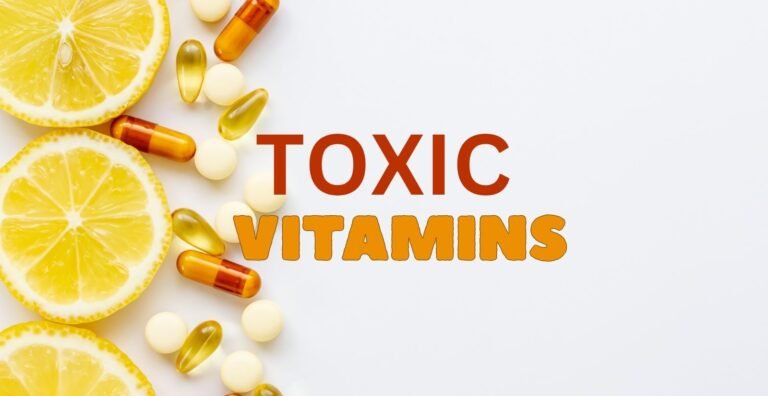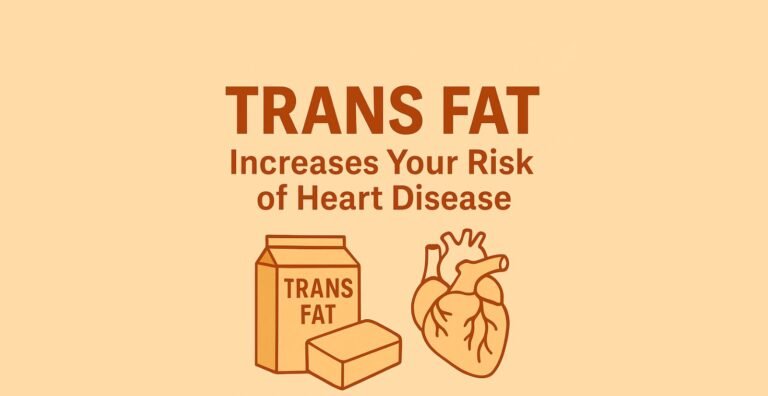Top Health & Wellness Product Reviews with Exclusive Sale Prices!
The Impact of Social Media on Youth Mental Health

Introduction to Social Media and Youth
The integration of social media into the daily lives of adolescents has reached unprecedented levels in recent years. According to recent studies, approximately 95% of teenagers report using some form of social media, with platforms such as Instagram, TikTok, and Snapchat being particularly popular among youth. These platforms provide spaces for communication, self-expression, and social interaction, profoundly shaping the experiences of young people in today’s digital age.
Social media offers distinct advantages, such as fostering connections and community engagement. However, the pervasive use of these platforms also raises concerns regarding adolescent mental health. The ease with which youth can share content, interact with peers, and access information can contribute to both positive and negative psychological outcomes. For instance, while social media can promote digital wellbeing for youth through connectivity, it can also lead to feelings of inadequacy and anxiety, frequently referred to as social media anxiety in teens.
The popularization of social media has inadvertently created environments where comparisons digital influence thrive, enhancing pressures surrounding physical appearance and social status. Adolescents may encounter cyberbullying, which can have devastating effects on their mental health. The psychological impact is magnified due to the continuous exposure to curated images and lifestyles, potentially fostering a sense of inadequacy and isolation among peers.
Moreover, research indicates that the average teenager spends approximately 7 hours per day engaging with digital devices, often while simultaneously maintaining interactions on multiple platforms. This staggering duration highlights the necessity of understanding the implications of youth social media usage. As communities, parents, and educators strive to safeguard adolescent mental health and social media interaction, it becomes essential to balance the positive aspects of connectivity with the possible negative consequences tied to excessive use and associated social media addiction in adolescents.
Positive Effects of Social Media
Social media has emerged as a powerful tool for enhancing communication and connectivity among youth. One of the most significant benefits is the ability to establish and maintain relationships, regardless of geographical barriers. Through social media platforms, adolescents can connect with peers, share experiences, and develop a sense of community that fosters belonging. This is particularly important during formative years when social connections greatly influence adolescent mental health.
Furthermore, social media provides a platform for self-expression and creativity. Teens can share thoughts, artwork, music, and personal stories, allowing them to explore their identities and gain confidence in their individuality. This form of expression can serve as a coping mechanism for young individuals dealing with various challenges, including social media anxiety in teens. Sharing experiences online can also help them feel less isolated, as they discover that others share similar struggles.
The role of social media in creating support networks is another positive aspect that cannot be understated. Online communities often emerge around common interests or shared life experiences, offering adolescents a safe space to seek advice and encouragement. Many youth have benefited from mental health resources and information available through various platforms, potentially reducing the stigma associated with seeking help. These digital spaces can help facilitate discussions about adolescent mental health, promoting awareness and understanding.
Moreover, social media can help young people develop essential communication skills. Engaging in discussions, providing feedback, and navigating conflicts online contribute to their social development. By practicing interpersonal skills in a virtual environment, adolescents may better prepare for face-to-face interactions, which are crucial for their overall well-being. The psychological impact of these online experiences can, therefore, lead to improved social abilities that benefit youth in multiple aspects of life.
In essence, while it is crucial to address the negative consequences of youth social media usage, acknowledging its positive effects is equally important. Through fostering connections, providing support, and enhancing communication skills, social media can serve as a valuable resource for adolescents navigating their mental health journey.
Negative Effects of Social Media
Social media has become an integral part of daily life among adolescents, facilitating communication and the sharing of experiences. However, the darker aspects of youth social media usage cannot be overlooked, as they have significant implications for adolescent mental health. One of the most prevalent issues is cyberbullying. Unlike traditional bullying, which is often confined to physical spaces, cyberbullying can occur 24/7, exposing teens to relentless harassment and negative feedback. The psychological impact of being subjected to cyberbullying can lead to increased levels of anxiety, depression, and a profound decline in overall mental well-being.
Another concerning issue is social comparison, where adolescents constantly compare their lives to the carefully curated portrayals of others online. This phenomenon can distort self-image and create unrealistic standards for success, beauty, and happiness. Such comparisons often lead to feelings of inadequacy and low self-esteem. As young users scroll through images of seemingly perfect lives, they may experience heightened social media anxiety in teens, perpetuating a cycle of negative thoughts and feelings.
Furthermore, the addictive nature of social media platforms can exacerbate these issues, limiting time spent on important offline activities, such as physical exercise and face-to-face interactions. This disconnection from reality can impact adolescents’ understanding of social cues and relationships. The influence of social media on youth is further complicated by exposure to harmful content, unrealistic body image standards, and the pressure to engage in constant online validation, all of which correlate with the deterioration of mental health. It is crucial to recognize these factors to promote digital wellbeing for youth and foster a healthier online environment.
The Role of Screen Time
In contemporary society, the prevalence of social media among adolescents has led to increased screen time, which plays a significant role in shaping their mental health. Recent studies have shown a strong correlation between excessive screen time and various mental health issues, notably social media anxiety in teens. Extended use of social media platforms often results in disruptions in sleep patterns, which are critical for the development and overall wellbeing of young individuals.
Sleep deprivation is a common consequence of heightened youth social media usage. The blue light emitted from screens can interfere with the production of melatonin, the hormone responsible for sleep regulation. As a result, insufficient sleep may exacerbate feelings of anxiety and depression, subsequently impacting adolescent mental health. Furthermore, reduced physical activity is another concern associated with prolonged screen exposure, which is essential for promoting overall mental wellbeing in youth. Engaging in physical activities has been shown to improve mood and reduce feelings of anxiety, illustrating the importance of balancing screen time with active lifestyles.
The psychological impact of social media is also profound; exposure to curated and often unrealistic portrayals of life can exacerbate feelings of inadequacy among teens. They may develop social media addiction, constantly seeking validation and approval through likes and comments. This compulsive behavior fosters anxiety and negatively affects self-esteem, highlighting the detrimental influence of social media on youth.
Additionally, cyberbullying effects on youth have risen in tandem with increased screen time. The anonymity afforded by social media can lead to a spike in harassment, contributing to heightened levels of stress and anxiety. It is crucial for caregivers and mental health professionals to recognize the intersection of screen time and adolescent wellbeing, promoting digital wellbeing for youth to mitigate these risks. Addressing the nuances of social media’s influence on youth can foster healthier online behaviors and enhance mental health outcomes in adolescents.
Social Media and Body Image Issues
In recent years, the proliferation of social media has significantly influenced various aspects of life, particularly among adolescents. The constant exposure to idealized images, often showcasing unrealistic body standards, has raised concerns about social media anxiety in teens. This phenomenon highlights the negative psychological impact that curated online content can have on youth social media usage. Research indicates that adolescents frequently compare themselves to these digitally altered representations, leading to body dissatisfaction and increased risk of eating disorders.
The connection between mental health and social media is particularly pronounced in the context of body image. A study from the Journal of Adolescent Health indicated that adolescents who reported higher levels of engagement on platforms such as Instagram and TikTok were more likely to experience negative self-esteem associated with their physical appearance. This correlation suggests that the social media influence on youth extends beyond mere likes and shares, affecting their personal perceptions of self-worth and beauty.
Moreover, social media addiction in adolescents can exacerbate these issues. As teens spend more time scrolling through feeds filled with curated images, they may develop a distorted view of their bodies. This can lead to unhealthy behaviors such as extreme dieting or compensatory exercise practices. Furthermore, the prevalence of cyberbullying effects on youth, often facilitated by social media platforms, can compound body image issues, contributing to feelings of inadequacy and further diminishing mental wellbeing.
Overall, the digital wellbeing for youth must be a focal point in discussions surrounding adolescent mental health. It is essential to foster a healthier online environment that promotes positive body images rather than perpetuates harmful standards. Addressing the psychological effects of social media on body image should be a priority for parents, educators, and mental health professionals alike, to mitigate the adverse consequences associated with youth engagement online.
Strategies for Healthy Social Media Use
Given the growing concern regarding the impact of social media on adolescent mental health, it is essential for teens to adopt strategies that promote healthy engagement with these platforms. One of the first steps involves setting personal boundaries. Adolescents should establish specific times for social media use to prevent it from dominating their daily routines. Limiting screen time can reduce the likelihood of experiencing social media anxiety in teens. Additionally, choosing to engage with social media only during certain hours can foster a more balanced approach to digital wellbeing for youth.
Moreover, promoting critical media literacy is vital. Teens should be encouraged to question the content they consume, recognizing that many portrayals on social media are curated and may not accurately reflect reality. Educators and parents can facilitate discussions around the difference between genuine interactions and those influenced by social media. By understanding the social media influence on youth, adolescents can cultivate a more discerning perspective that reduces the psychological impact of online interactions.
Encouraging constructive online interactions is another essential strategy. Teens should be reminded of the importance of kindness and respect in their digital communications. This approach not only helps to mitigate the effects of cyberbullying on youth but also promotes a supportive online environment. Engaging in communities that prioritize positive content can lead to healthier experiences and reduce the likelihood of social media addiction in adolescents.
Additionally, it is valuable to remind youth to take breaks from social media. Regular detox periods can help alleviate social media anxiety in teens and provide an opportunity for face-to-face interactions, which are essential for fostering supportive relationships. Overall, by implementing these strategies, adolescents can engage with social media in a manner that supports their mental health and well-being, helping to mitigate negative outcomes associated with excessive use.
The Role of Parents and Educators
As social media continues to evolve, the role of parents and educators in mitigating the risks associated with youth social media usage has become increasingly important. Adolescents today are often deeply integrated into various online platforms, making it vital for adults in their lives to engage with them in meaningful ways. By fostering open lines of communication, parents can create an environment where teens feel comfortable discussing their online experiences, including the feelings of social media anxiety that may arise.
Monitoring social media usage is a crucial component of responsible digital wellbeing for youth. Parents should not only be aware of the platforms their children are using but also educate themselves about potential risks, such as cyberbullying effects on youth, social media addiction in adolescents, and the psychological impact of social media on mental health. By understanding the landscape, parents can better support their children and intervene when necessary. Setting boundaries on screen time and encouraging alternative activities can also help in maintaining a balanced lifestyle.
Moreover, educators play an essential role in teaching adolescents about the implications of their online behavior. Schools can implement programs that focus on adolescent mental health, emphasizing the importance of digital literacy and empathetic engagement online. Lessons on the risks associated with social media, including the effects of social media influence on youth, can equip students with the tools they need to navigate the digital landscape responsibly. Through collaborative efforts, parents and educators can develop comprehensive strategies to promote mental health and social media usage that prioritize the well-being of young individuals.
By encouraging ongoing conversations about the challenges of social media and fostering a supportive environment, parents and educators can significantly influence how teens interact with digital platforms, ultimately leading to improved mental health outcomes.
Future Directions in Research
The evolving landscape of social media presents numerous opportunities and challenges for researchers focusing on adolescent mental health. As platforms such as TikTok, Snapchat, and Instagram continue to change the ways in which youth interact, it is critical to explore the implications of these advancements on social media anxiety in teens. While existing literature has established a connection between mental health and social media, significant gaps remain, particularly regarding how new trends shape youth social media usage and the subsequent psychological impact.
One area that warrants deeper investigation is the role of emerging social media trends, such as ephemeral content and algorithm-driven feeds, in exacerbating social media addiction in adolescents. These mechanisms can heighten feelings of inadequacy, contributing to increased levels of anxiety and depression among youth. Future research should examine the relationship between these platform features and adolescent mental health, focusing on not only usage patterns but also the quality of interactions and their influence on self-esteem and overall wellbeing.
Moreover, the effects of cyberbullying, a phenomenon that has been aggravated by social media platforms, are yet to be fully elucidated. Investigating the long-term consequences of cyberbullying effects on youth will be essential in understanding overall adolescent mental health when navigating these digital spaces. As the conversation around digital wellbeing for youth continues to grow, researchers should also consider regulatory and educational frameworks that promote healthier online environments.
Lastly, longitudinal studies that track youth social media usage over time can yield more comprehensive insights into the social media psychological impact on contemporary youth. By focusing on diverse populations and considering contextual factors such as socio-economic status and cultural background, future research endeavors can build a more nuanced understanding of mental health and social media interactions in adolescents.
Conclusion
In examining the multifaceted impact of social media on adolescent mental health, it becomes evident that the relationship is both complex and nuanced. On one hand, digital platforms can facilitate connections, provide access to resources, and foster communities of support for youth grappling with various issues. However, the darker aspects of youth social media usage cannot be overlooked, including the pervasive social media anxiety in teens, which can exacerbate feelings of inadequacy and isolation. The psychological implications of consistently being online can lead to social media addiction in adolescents, creating a cycle where negative emotions are both triggered and amplified by online interactions.
Furthermore, the adverse effects of cyberbullying stand out as a significant concern, as it can severely undermine a young person’s self-esteem and contribute to broader mental health challenges. Research suggests that the social media influence on youth frequently results in detrimental outcomes, highlighting the urgent need for strategies targeting digital wellbeing for youth. It is crucial to recognize the role parents, educators, and policymakers play in promoting healthy online habits and ensuring safe environments for youth.
As we move forward, fostering a balance between the benefits and drawbacks of social media becomes imperative. Encouraging open discussions around adolescent mental health while using digital platforms may limit the harmful psychological impact associated with excessive social media engagement. Ultimately, cultivating digital literacy and empowering young people to navigate their social media experiences responsibly is essential for safeguarding their mental health. By prioritizing balanced social media strategies, society can harness the potential of these platforms while mitigating the risks, promoting overall welfare among the youth population.







